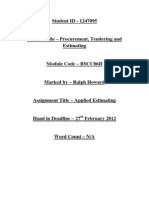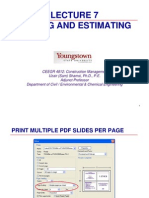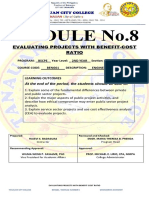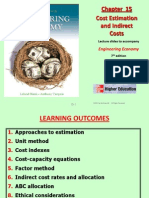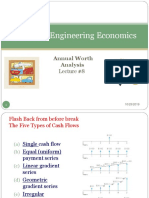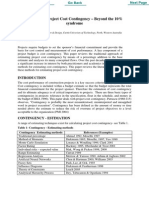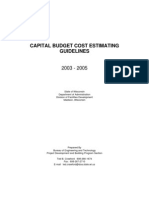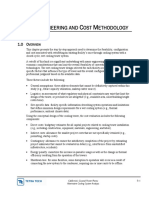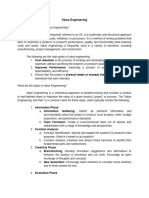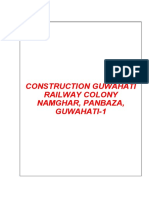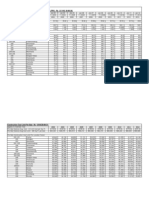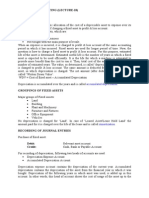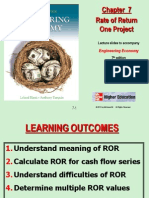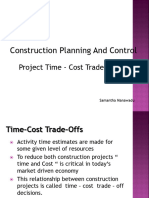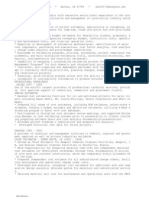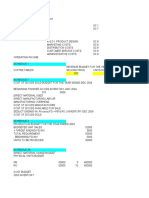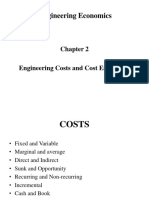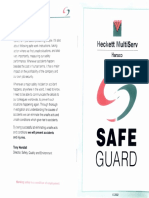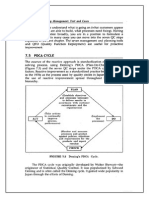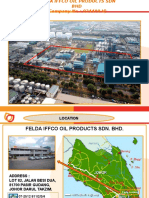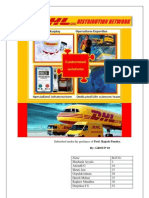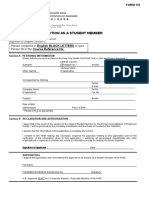Engineering Economics ECIV 5245
Chapter 2 Engineering Costs and Cost Estimating
COSTS
Fixed and Variable Marginal and average Direct and Indirect Sunk and Opportunity Recurring and Non-recurring Incremental Cash and Book Life-Cycle
COSTS
Fixed Costs
They are constant or unchanging regardless of the level of output or activity
e.g. Costs for factory floor space stays the same regardless of the production quantity, number of employees, and the level of work-inprocess.
Variable Costs
They vary with the level of output or activity
e.g. Labor costs since they depend on the number of employees
COSTS
Marginal Cost
The variable cost for one more unit
Used to decide whether the additional unit should be made, purchased, or enrolled in.
Average Cost
The total cost divided by the number of units
Used to attain an overall cost picture of the investment on a per unit basis.
Example
A university charges students a fixed cost for 12 to 18 hours and a cost per credit hour for each credit hour over 18 (page 28)
Variable cost for students taking > 18 hours. If a student is enrolled for 12-17 hours, adding one more is free; i.e. the marginal cost is $0 If a student is taking 18 hours, then the marginal cost equals the variable cost of one more hour. Cost of 12 to 18 hours is $1800. Overload credits cost $120/hour.
12 hours 18 hours 21 credits
Average cost Marginal cost
$150 $0
$100 $120
102.86 $120
COSTS
Total cost = Total fixed cost + Total variable cost
Example 2-1
DK is thinking of chartering a bus to take people to an event in a large city. He is providing transportation, tickets to the event, and refreshments on the bus. He predicted the following expenses:
Bus rental Gas expense Other fuels Bus driver $80 $75 $20 $50 Event ticket Refreshments $12.5 per person $ 7.5 per person
Total fixed costs and total variable costs?
Fixed costs will be incurred regardless of how many people sign up for the
trip. Total fixed costs = 80 + 75 + 20 + 50 = $225. Variable costs depends on how many people sign up for the trip. Total variable costs = 12.50 + 7.50 = $20 per person
7
Example 2-2
Develop a formula for the total cost and evaluate the potential to make money from the trip. DK believes that he could attract 30 people at $35 per ticket.
Total cost = total fixed cost + total variable cost Total cost = $225 + 20x x = number of people on the trip Total revenue = (ticket price)(x) = 35x Total profit = (Total revenue) (Total costs) = 35x (225 + 20x) = 15x 225 At x = 30 Total profit = 35 30 (225 + 20 30) = $225 So, if 30 people go for the trip, DK will make a net profit of $225
Example
In the chartered bus example, find the number of people at which costs and revenues are equal
Total cost = total revenue 225 + 20x = 35x X = 15 people x = 15 is the point that divides the regions into profit or loss. If x > 15 , DK will make money If x < 15, DK will lose money x = 15 is called the breakeven point.
Breakeven chart for DK chartered bus
1200 1000
Total revenue
y = 35x
800
Cost
600
Total cost
y = 20x + 225
400
200
Breakeven point
0 0 5 10 15 20 25 30
Customers
10
Sunk Costs
Money already spent as a result of a past decision. Should be disregarded in our engineering economic analysis
(because current decision cannot change the past)
As economists, we deal with present and future opportunities
Example
Share prices declined from $15 to $10 over the last 12 months.
The $15 is a sunk cost that has no influence on present opportunities Current decisions must focus on the current price ($10), as well as the future price potential.
Example Laptop for $2000 three years ago. Nowadays, the most that anyone would pay you for the laptop is $400. The $2000 is a sunk cost that has no influence on your present opportunity to sell the laptop The $400 is called the current market value.
11
Opportunity Cost
It is the benefit that is forgone by engaging a business resource in a chosen activity instead of engaging that same resource in the forgone activity.
(A business resource can be equipment, money, manpower, or any other resource)
Example Friends invited you to Europe. You calculated the cost of the 10-week trip to be $3000. You have the money and decided to go. By taking the trip, you give up the opportunity to earn $5000 as a summer intern. True cost = $3000 + opportunity cost of $5000 = $8000
12
Example 2-3
A distributor purchased a lot of old pumps 3 years ago. Newer pumps are now available in the market due to advances made in technology.
Comment
Purchase price 3 yrs ago Storage costs to date Distributor's list price 3 yrs ago Current list price of new pumps Amount offered for the old pumps 2 yrs ago Current price the old pumps would bring
$ 7,000 $ 1,000 $ 9,500 $12,000
$ 5,000 $ 3,000
- Sunk cost - Sunk cost - Too old - Misleading - Forgone opportunity - Market value
Pricing managers opinion: $8000 (to at least recover the cost)
13
Recurring and Nonrecurring Costs
Recurring Costs
Costs referring to any expense that is known, anticipated, and occurs at regular intervals. Modeled as cash flows that occur at regular intervals. e.g. resurfacing a highway, annual operation and maintenance expenses
Nonrecurring Costs
One-of-a-kind expenses that occur at irregular intervals. Difficult to plan for or anticipate from a budgeting perspective, both in terms of timing and size. You dont need to worry about paying them again and again. e.g. fire or theft losses, installing a new machine, emergency maintenance expenses, moving expenses.
14
Incremental Costs
When making a choice among competing alternatives, focus should be placed on the differences between those alternatives, i.e. incremental costs, not on the costs that are the same.
15
Example
What incremental costs would you incur if you chose model B instead of the less expensive model A? Model B has more features and a higher purchase price.
Cost Items
Purchase price Installation cost
Model A
$10,000 $3,500
Model B
$17,500 $5,000
Incremental Cost of B
$7,500 $1,500
Annual maintenance cost
Annual utility expense Disposal cost after useful life
$2,500
$1,200 $700
$750
$2,000 $500
$-1,750/yr
$800/yr $-200
16
Cash Costs versus Book Costs
Cash Costs A cash cost requires the cash transaction of dollars out of one persons pocket into the pocket of someone else. i.e. you are incurring a cash cost or cash flow. Cash costs and cash flows are the basis for engineering economic analysis Book Costs They are cost effects from past decisions that are recorded in in the books (accounting books). They are costs reflected in the accounting system only. Dont represent cash flows Not included in the engineering economic analysis Example: You might use Edmonds Used Car Guide to conclude the book value of your car is $6,000. The book value can be thought of as the book cost. If you actually sell the car to a friend for $5,500, then the cash cost to your friend is $5,500.
17
Life-Cycle Costs
Similar to humans; goods, products, and services designed by engineers progress through a life cycle.
Typical Life Cycle
1. 2. 3. 4. 5. 6. Needs definition Conceptual design Detailed design Production Operation use Decline and retirement
18
Life-Cycle Costs
Life-cycle costing: Refers to the concept of designing products, goods, and services with a full and explicit recognition of the associated costs over the various phases of their life cycles. Engineers should consider all life-cycle costs when designing products and the systems that produce them. Life-cycle cost: It is the summation of all costs related to a product, structure, system, or service during its life span. All amounts are expressed in dollars and they must be time equivalent. This time-equivalency is important because a dollar today is worth more than a dollar next year because of the interest (profit) it can earn.
19
Cumulative life-cycle costs committed and dollars spent
100%
Life-Cycle Costs Committed
80%
Total Life Cycle Cost
60%
Note: 70-90% of all costs are set during the design phases. At the same time only 10-30% of cumulative life-cycle costs have been spent
40%
20%
Life-Cycle Costs Spent
0%
Project Phase
20
Life-Cycle Costs
Two key concepts in life-cycle costing
The later design changes are made, the higher the costs Decisions made early in the life cycle tend to lock in costs that are incurred later.
21
Life-Cycle Design Change Costs and Ease of Change
High
Ease or Cost of Change
Ease of Changing Design
Cost of Design Changes
Low
Project Phase
Note: Downstream changes vs. upstream changes
22
Costs Estimating
Difficult because future is unknown It is the foundation of economic analysis
If poor data are used, the analysis will be grossly inaccurate no matter how detailed your economic analysis was. This means that it is crucial to make careful estimates. In other words: The outcome is only as good as the quality of the numbers used.
23
Costs Estimating
Three Types of Estimate:
Rough Estimate
For high-level planning. To determine the macrofeasibility. Used in a projects initial planning phases. Accuracy is -30% to +60%.
Semi detailed Estimate
For budgeting purposes at a projects conceptual or preliminary design stages. Accuracy is -15% to +20%
Detailed Estimate
Used during the detailed design and contract bidding phases Made from detailed quantitative models, blueprints, product specification sheets, and vendor quotes Accuracy is -3% to +5%
The more detailed you are, the more resources (people, time, money) you will need. So, be careful to justify the resources you spent (e.g. detailed estimate for unfeasible alternatives!)
24
Estimating Models
Per-Unit Model Segmenting Model Cost indexes Power-sizing Model
25
Estimating Models
Per-Unit Model
Uses a per unit factor (e.g. cost per square meter) Commonly used in the construction industry Other examples: Gasoline cost per 1 km or how many km per 1L of gas
26
Estimating Models
Segmenting Model
Estimate is segmented into its individual components Then the estimates are aggregated back together.
27
Cost Indexes
Cost indexes are dimensionless numerical values that reflect historical change in costs.
Cost at time A Cost at time B = Index value at time A Index value at time B
28
Example 2-7
Miriam is interested in estimating the annual labor and material costs for a new production facility. She obtained the following data: Labor costs:
Labor cost index value was 124 ten years ago and is 188 today Annual labor costs for a similar facility were $575,500 ten years ago Material cost index value was at 544 three years ago and is 715 today Annual material costs for a similar facility were $2,455,000 three years ago
Material costs
Annual Cost today = Index value today Annual cost 10 yrs ago Index value 10 yrs ago Annual cost today = (188/124) x ($575,500) = $871,800
29
Power-Sizing Model
Used to estimate the costs of industrial plants and equipment It scales up or scales down costs
Would it cost twice as much to build the same facility with double the capacity It is unlikely
x
Cost of equipment A Cost of equipment B = Size or capacity of equipment A Size or capacity of equipment B
If x=1 linear cost-size relationship If x>1 diseconomies of scale Usually x<1 economies of scale
Where x is the power-sizing exponent
(Look at table 2-1 in your text for power-sizing exponent values)
30
Example 2-8
Miriam needs to estimate the cost of a 2500 ft2 heat exchange system. $50,000 for a 1000 ft2 heat exchanger 5 yrs ago Power sizing exponent x = 0.55 Five years ago cost index was 1306; it is 1487 today
0.55
Cost of 2500 ft2 equipment Cost of 1000 ft2 equipment
= 2500 ft2 1000 ft2
0.55
Cost of the 2500 ft2 equipment (five yrs ago) = 2500 50,000 = $82,800 1000 Equipment cost today = $82,800 1487 = $94,300 1306
31
Estimating Benefits
An important part of the economic analysis that should not be overlooked Similar to concepts and models used in estimating costs Benefits are more likely to be overestimated while costs are more likely to be underestimated Benefits continue in the future while costs are incurred in the near future
32
Cash Flow Diagrams (CFD)
Costs & benefits of engineering products occur over time
Use Cash Flow Diagram to represent them.
CFD illustrates the size, sign, and timing of individual cash flows. Use one perspective: One persons cash outflow is another persons inflow
33







